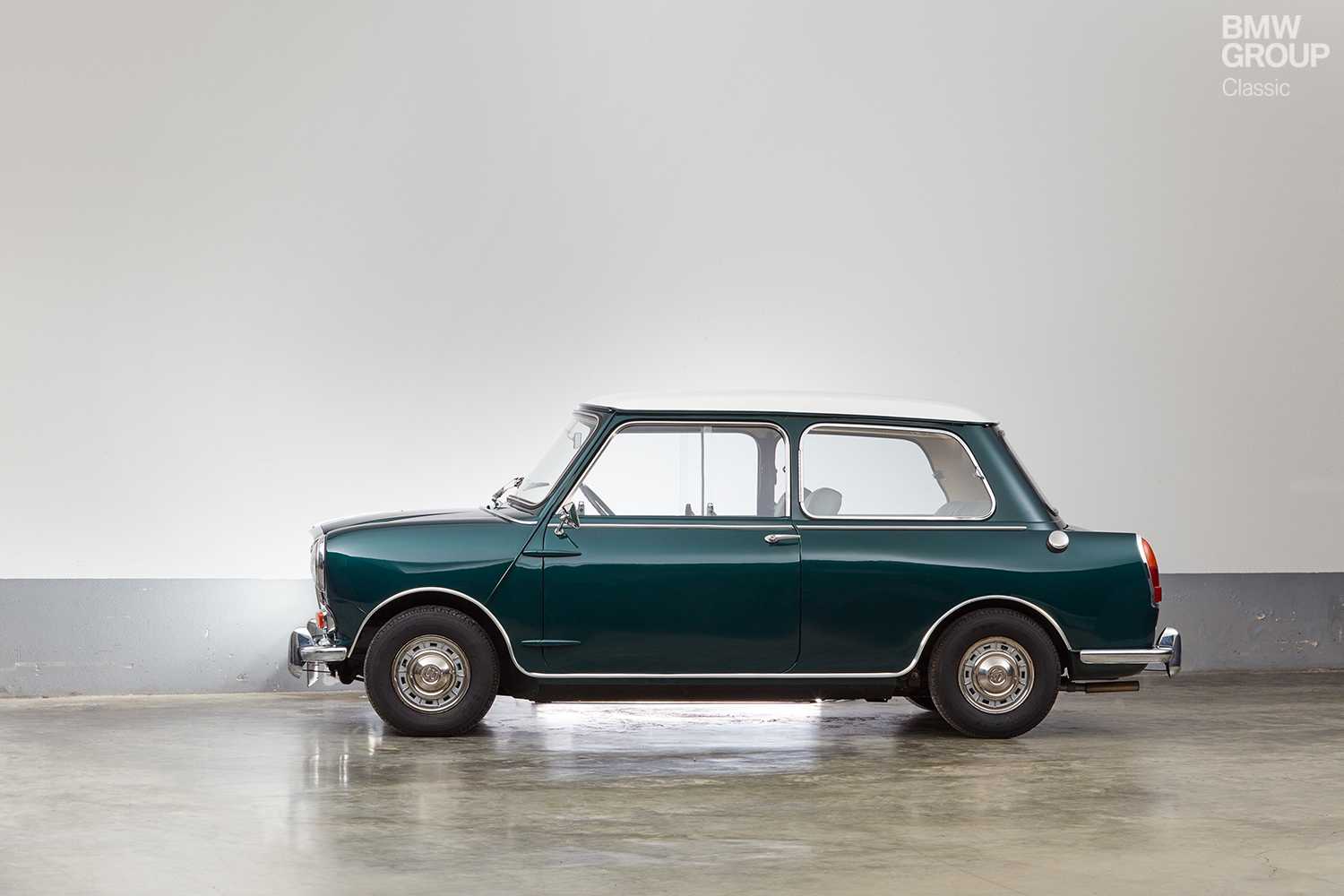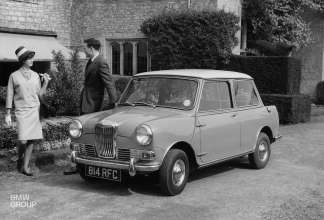The Wolseley Hornet was proud to wear the name of a renowned British car brand, but more than anything it was a Mini. Like its close relative of identical construction, the Riley Elf, the Wolseley Hornet is one of the most sought-after and rarely spotted variants of the classic Mini.
The British car industry can look back on some highly successful but also dramatically fluctuating times. Ingenious designs and great marques have blazed a trail around the world, yet some management decisions remain baffling and difficult to comprehend – even today, many decades down the line. Happily, some of those decisions spawned models that, while a little offbeat in nature, have proved to be a whole heap of fun and will never want for fans or following. Indeed, there are variants of the classic Mini whose quintessentially British freeness of spirit espouse this capacity to confound. The Wolseley Hornet and structurally identical Riley Elf are most certainly among them.
Wolseley, the “insider brand”.
Wolseley is a British company whose roots in motorised vehicle production reach back as far as 1896. Its first designer, Herbert Austin, even founded a successful car company of his own in later years. In the economically turbulent 1920s Wolseley was integrated into Morris, which later merged with the Austin Motor Company to form the British Motor Corporation (BMC). The brand lived on after the Second World War, with super-luxurious variants from BMC granted permission to wear the Wolseley “W”. Then in the early 1960s, the Mini set about transforming itself into a Wolseley.
Beguiling looks.
The Wolseley Hornet harked back to a time of glitz and glamour. Its front end was adorned by a classically upstanding grille, which peered down on a design statement of broad horizontal bars incorporating turn signal indicators, while slim trim strips twined around the side skirts and front wings. The real surprise, however, lay in wait at the rear of the car. This was where the Mini as it was known and loved suddenly stopped being a Mini – and morphed into a compact sedan with a sticky-outy boot and vertically-stacked rear lights of arresting size. The tail protruded a full 22 cm, its large lid opening to reveal a significantly expanded luggage space that was even easier to load things into than the boot of its stub-tailed parent.
Again, with style.
On the inside, the Hornet was true to the classical standards of a British gentlemen's outfitters, an exercise in peerless quality and anti-modishness. The polished wood on the dash was a feast for the eyes and fingers glided over exquisite trim materials. Most recently, in the Mark III, there was even real leather to enjoy. Where the Mini – a down-to-earth car for the ordinary man and woman – majored on value for money and practicality, the Wolseley lavished its owners with goodies. You might even say there was a hint of the pocket Rolls-Royce about it.
Mini engineering under the skin.
Beneath the metalwork, the Wolseley was a classic Mini like any other. Initially it was powered by an 848cc four-cylinder engine producing 34 hp, which sufficed for a top seed of 118 km/h (73 mph). But the later Mark II and Mark III versions enjoyed the benefits of 998cc, 38 hp and 123 km/h (76 mph). The Hornet was more about its standout fixtures and fittings than any superiority in performance, though. After all, if you wanted “go faster”, you’d go and get a Cooper S.
Of insects and elves.
At first, fleeting glance, you’d be forgiven for mistaking the Wolseley Hornet for a Riley Elf. However, the two differed in some very distinct ways around the grille and air intakes. The Hornet’s illuminated badge was a particularly prominent distinguishing feature – and a signature of all Wolseley models from 1932. Like Wolseley, Riley was an illustrious brand, but one that rang few bells in continental Europe.
The last Hornets of the swarm buzzed off the assembly line in August 1969, joined by the final, fluttering Elf around the same time. Surviving examples of both cars are now few in number and highly prized. These special variants of the classic Mini have existed beyond the gaze of many. All of which makes the reception they enjoy on a rare public outing that much warmer. Indeed, it’s difficult to think of anything more British – or more lovable – on two wheels or four.




